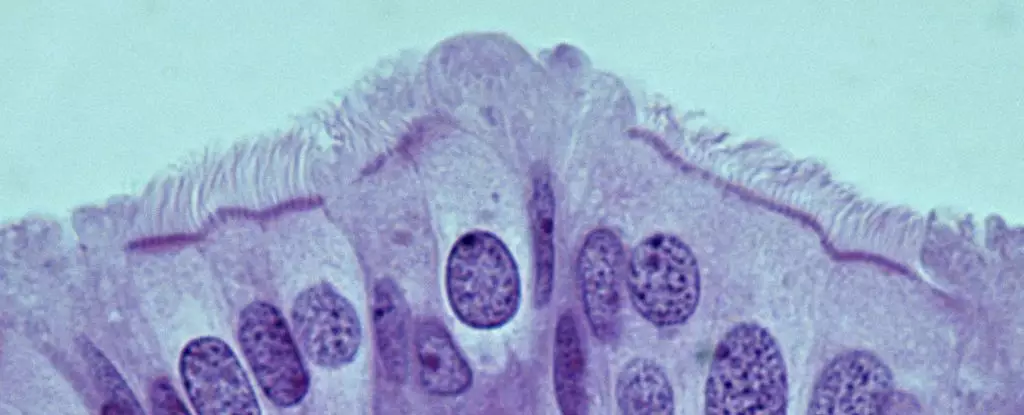High-grade serous ovarian carcinoma (HGSOC) stands as one of the most formidable adversaries in cancer treatment, with a grim prognosis for affected individuals. A recent study that examines the underlying mechanisms in mice presents a potential breakthrough in the quest for early detection and better treatments for this aggressive malignancy. The findings revolve around new insights into the cellular origins of HGSOC, particularly within the oviducts, and may reshape our understanding of ovarian cancer.
For many years, the prevailing belief was that ovarian cancer originated primarily within the ovaries. However, accumulating evidence suggests that a significant number of these cancers could actually begin in the fallopian tubes, particularly in HGSOC cases. This paradigm shift has emerged gradually, catalyzed by research that uncovered lesions at the ends of the fallopian tubes. These lesions were found to have genetic ties to tumors developing in the ovaries, signifying a need to rethink where and how these cancers initiate.
Given that early detection is crucial, this realization prompts an urgent necessity for researchers to pinpoint the specific cell types responsible for HGSOC and their mechanisms. Currently, the rudimentary understanding of these cells presents a barrier to developing effective diagnostic tools and therapeutic targets. The work of researchers like Alexander Nikitin from Cornell University highlights the critical need for detailed characterization of the cells involved in cancer initiation.
The latest research led by Nikitin offers valuable insights into the specific cells within the oviducts of mice that predispose them to HGSOC. This study is particularly noteworthy as it successfully describes various cell types found in the mouse oviduct for the first time, marking a significant milestone. Initially focusing on stem cells in the ovaries, the researchers shifted their attention to the transitional cells known as pre-ciliated cells in the oviduct, which play a pivotal role in the movement of oocytes.
Contrary to what might be expected, it was not the stem cells, but rather these pre-ciliated cells that displayed a susceptibility to cancer formation. Researchers discovered that when specific genetic mutations associated with HGSOC were present, these cells became instrumental in driving cancer development. This groundbreaking finding underscores the connection between ciliogenesis—the formation of hair-like structures on cells—and the onset of ovarian cancer.
Interestingly, the implications of ciliogenesis extend beyond ovarian cancer. The research points to potential parallels with other cancers, such as pancreatic cancer, where defects in ciliary function have been linked to tumor development. This broadens the horizons for future studies, suggesting that mutations affecting cilia regulation may play a role across different types of malignancies.
Identifying the specific cells responsible for HGSOC in humans could revolutionize early detection methods, potentially saving countless lives by enabling proactive monitoring and intervention. The intricate relationship between genetic mutations and cellular behavior is becoming increasingly clear. With further investigation into these mechanisms, researchers might obtain the insights needed to develop targeted strategies for intervention.
Though the findings shed light on essential aspects of HGSOC, researchers emphasize the necessity of greater exploration into the mechanisms of tumor formation. As they delve deeper into the nuances of cell behavior in the context of ovarian cancer, the hope is to identify not only the key players responsible for the disease but also to unravel the pathways that lead to its development.
The research surrounding the origins of high-grade serous ovarian carcinoma marks a significant advance in the fight against ovarian cancer. With renewed emphasis on understanding the oviduct’s cellular landscape, researchers are pursuing a path that could ultimately lead to more effective detection and timely intervention, offering hope to countless patients diagnosed with this aggressive form of cancer. The journey is only beginning, but the promise of these discoveries could significantly alter the landscape of ovarian cancer treatment and improve outcomes for patients worldwide.

